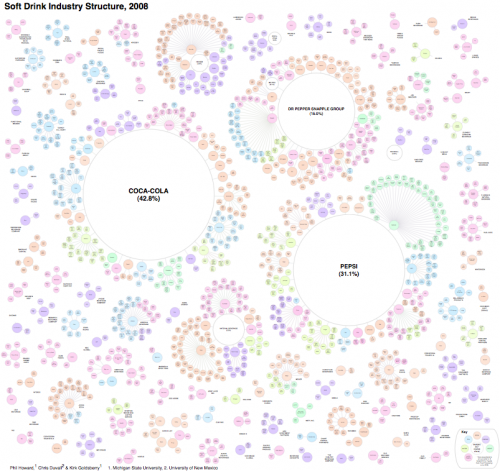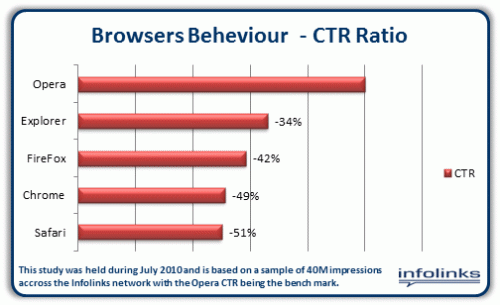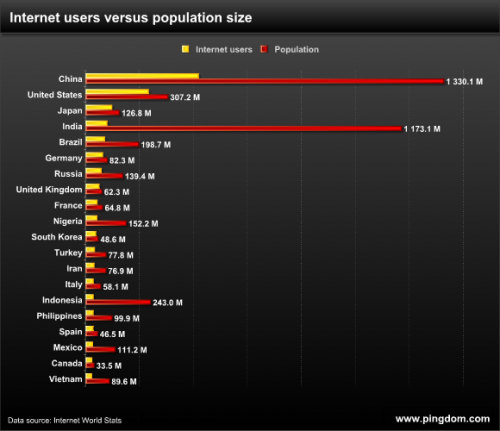Kottke has a link to an interesting article, with much more interesting visualization of soft drinks industry. The article discusses pseudovariety. That’s when you think you have a lot of something, when indeed you really don’t. Like with all those soft drinks on the shelves of every supermarket. You think there is a whole lot of them, when in fact most of them are brands of either one of the three major companies.
One other example of pseudovariety that came to my mind was from the field of politics. Think about it. There are usually a number of political parties and presidential candidates at every election. All of them spend hours and millions of dollars to promote themselves, demote their competition, and explain to you how different they are from everything you’ve seen to this day. But in reality, most of them are pretty much the same. You can see it from the way they talk, the way they work, the way they lie, the way they approach difficult problems, and the way they talk about simple things.
It often seems like you have so much to choose from, when in fact, you really don’t.


